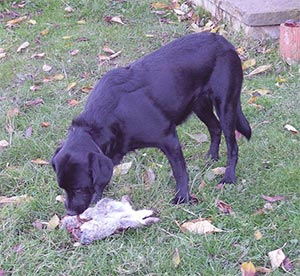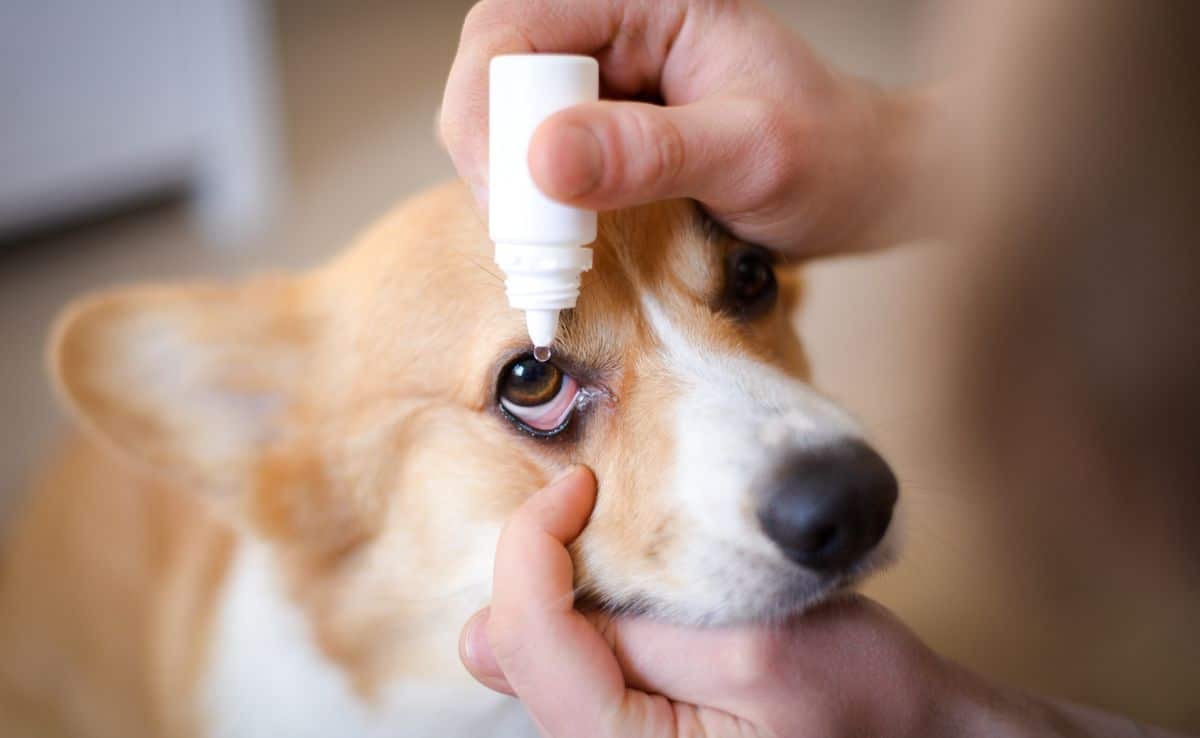Tapeworms In Dogs: Symptoms, Treatment, Prevention & More
When you purchase through links on our site, we may earn a commission. Here’s how it works.

You’ve probably seen at least one cringe-worthy video of an unbelievably long tapeworm being pulled out of an animal or even a human. Yes, tapeworms are disgusting, but unfortunately, they’re also easily transmitted to our pets.
Table of Contents
How do you know if your dog has them? And are tapeworms a serious health threat? We answer all of your questions about symptoms, treatment, prevention, and more.
What Are Tapeworms?
Tapeworms are flat, segmented intestinal parasites that live in dogs, cats, and many other animals. They use their hook-like mouth to attach to the small intestine wall, where they absorb nutrients from the dog. There are several types of tapeworms, but the most common in dogs is Dipylidium caninum. Adult tapeworms in dogs can reach anywhere from 4 to 28 inches in length.
How Do Dogs Get Tapeworms?

Unlike other intestinal worms like hookworms and roundworms, dogs cannot become infected by eating the eggs or larvae directly. Instead, the tapeworm has to have an intermediate host to become infectious in dogs. Dipylidium caninum uses fleas as its intermediate host, but other species of tapeworms use other animals, like rodents, as their host.
Tapeworms In Dog Poop: Cycle Of Infection
Here’s the cycle of infection:
- A dog ingests a flea or rodent, bird, rabbit, etc., that is harboring tapeworm eggs. Dogs can easily ingest fleas when grooming themselves or another dog or cat.
- The eggs settle into your dog’s small intestine and develop into an adult tapeworm.
- As the adult matures, individual segments called proglottids to break off and pass in the feces. Since each segment contains tapeworm eggs, the cycle of an infestation can easily continue.
It can take about three weeks, from when your dog swallows a flea or ingests another infected animal to when tapeworm segments appear on his rear end or poop.
Tapeworm Symptoms In Dogs
The most obvious sign that your dog has tapeworms is that he’s scooting his butt along the ground or rug and/or licking his anal area a lot. Tapeworm segments can stick to the fur around the anus, and this causes irritation. You may also notice these segments around his anus or on the surface of his poop — they resemble worms that look like rice in dog poop (and some may still be moving).
TIP: Another major reason dogs scoot their butts along the ground is when they have impacted anal glands, so be sure to rule out this condition.

Dogs with a tapeworm infestation typically don’t get ill or show other signs. Occasionally dogs may have some of the minor intestinal-type symptoms below.
- Upset stomach
- Vomiting
- Diarrhea
- Abdominal discomfort
- Weight loss (in extreme infestations)
- Itching around the anus
Tapeworms in puppies can be more serious (especially if they’re very young) and can cause a lack of normal growth, intestinal blockages, and anemia.
Diagnosis & Treatment
Your vet will diagnose this condition after seeing tapeworm segments on your dog’s anus or in a stool sample. Occasionally your vet may need more than one sample because tapeworm segments and eggs don’t always pass when your dog poops.
Your vet will give your dog a one-time injection or prescribe an oral dewormer containing praziquantel, which causes the tapeworm to dissolve in the small intestine. Praziquantel is safe and usually has no adverse side effects.
Common tapeworm medicine for dogs:
Prevention
These are the best ways to prevent tapeworms in dogs:
- Control fleas on your pet by applying a flea preventative regularly and keeping your house and yard flea-free. See our tips on how to get rid of fleas.
- Keep your dog away from dead animals and garbage.
- Clean up dog poop immediately. Find the best pooper scooper and poop bags here.
- Avoid areas where there’s a lot of dog feces on the ground.
Can People Get Tapeworms?
The risk of getting the Dipylidium species from your dog is minimal because you’d have to swallow an infected flea. In rare cases, this happens with small children, but this infection isn’t severe.
Humans can get other types of tapeworms not associated with our dogs. This can occur when you consume undercooked meat from an infected animal (beef, pork, and fish are the primary carriers). It’s also possible to get tapeworms in unsanitary conditions, e.g., in underdeveloped areas where sewage isn’t well contained.
Personal Experience
Michelle, Co-Founder of Canine Journal, shares her own experience with tapeworm.
When traveling in Central America, my husband and I were infected with tapeworm and giardia. The symptoms were horrific and we would not have recovered well without a doctor. I would urge pet parents to take their dog in for an exam the minute they suspect either concern since both require medical attention, in my experience.
What Do Tapeworms Look Like In Dog Poop
Not sure if what you see in your dog’s poop are tapeworms? Check out this video to see what tapeworm eggs in dog poop look like.
Other Types Of Worms In Dogs
Not sure your dog has tapeworms or another type of worm? Be sure to read our comprehensive article on worms in dogs, where we explain common symptoms and treatments for heartworms, hookworms, roundworms, tapeworms, whipworms, and other intestinal parasites.





